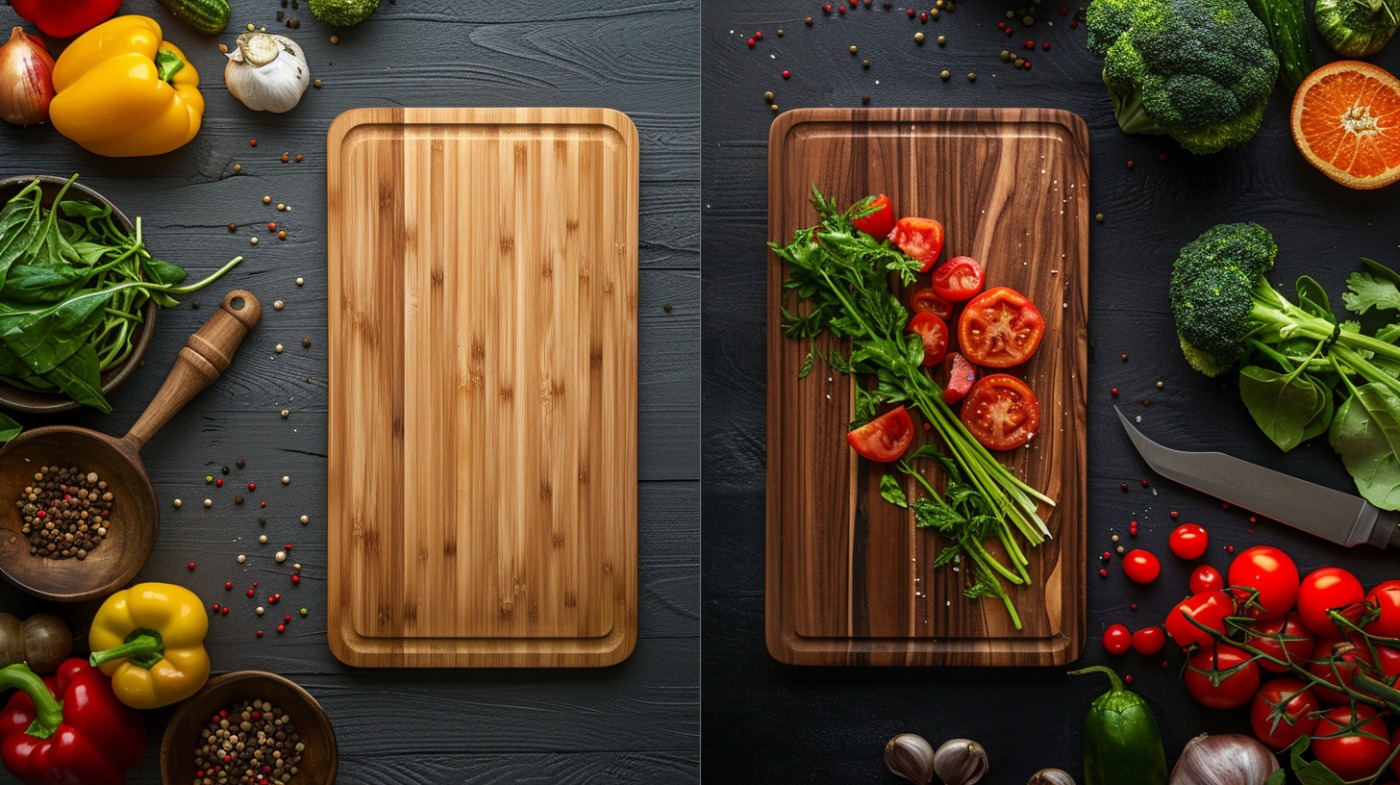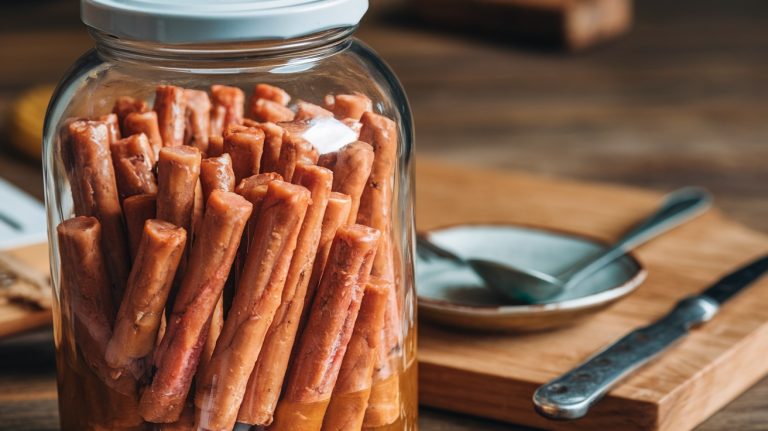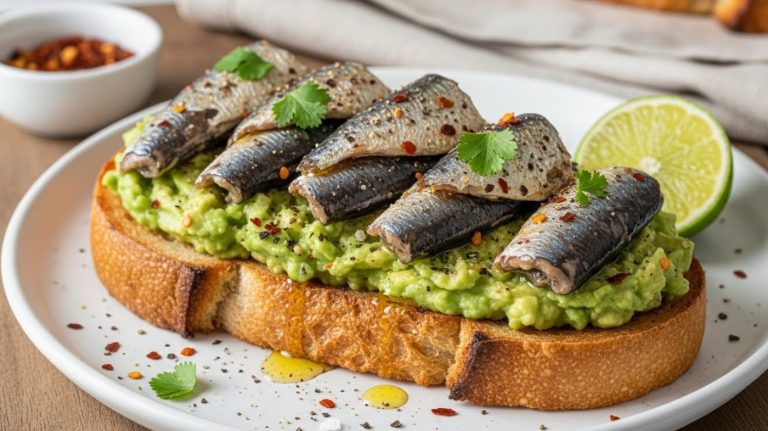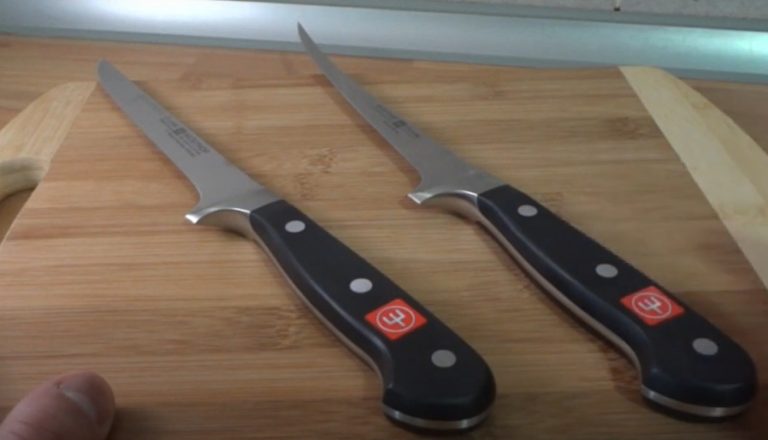Bamboo Vs Wood Cutting Board: Eco-Friendly or Knife-Friendly?
When you’re choosing between a bamboo and wood cutting board, each has its strengths. Bamboo boards are eco-friendly, durable, and resistant to warping, but their porous nature can harbor bacteria and they might dull knives faster. On the other hand, wood boards, like maple and walnut, boast lower porosity, making them easier to clean and gentle on your knives.
They also have natural antimicrobial properties, providing extra safety. Both require proper care, but wood tends to last longer. Discovering more about their care and unique qualities can help you make an informed choice for your kitchen.
Key Takeaways
- Bamboo cutting boards are eco-friendly and renewable, while wood options like maple and walnut offer enhanced durability and antimicrobial properties.
- Wood boards are less porous, making them easier to clean and reducing the risk of bacteria harboring compared to bamboo.
- Bamboo is harder and more resistant to wear but can dull knives faster due to its high silica content.
- Proper maintenance, such as regular oiling, is essential for both types; however, bamboo requires more frequent oiling than wood.
- Wood cutting boards generally have a longer lifespan of 5 to 10 years, while bamboo boards tend to wear out more quickly.
Key Characteristics of Cutting Boards
When choosing a cutting board, understanding the key characteristics of bamboo and wood options can greatly influence your decision.
Bamboo, classified as a grass, tends to be more porous than most woods, which can impact its ability to resist moisture and bacteria growth. On the other hand, wood cutting boards, like those made from maple, walnut, or cherry, offer unique grain patterns and colors while often boasting better antimicrobial properties due to their denser grain structure.
You’ll find that bamboo cutting boards are generally harder, rated by the Janka hardness scale, making them resistant to scratches and cuts. However, keep in mind that this hardness can also lead to quicker wear on your knife edges.
While bamboo has natural antibacterial properties, its high silica content can be a double-edged sword when it comes to maintaining your blades. Wood boards, being less porous, allow for easier cleaning and maintenance, reducing the risk of harboring bacteria.
Advantages of Bamboo Cutting Boards
Bamboo cutting boards offer a range of advantages that make them a smart choice for any kitchen. First and foremost, bamboo is an eco-friendly material. As a fast-growing renewable resource, it can be harvested in less than a year, making it a sustainable option for environmentally conscious cooks.
Additionally, similar to how black kitchen sinks can enhance kitchen aesthetics, bamboo cutting boards add an elegant touch to kitchen decor.
You’ll appreciate their durability, too. Bamboo boards resist wear from sharp knives, showing fewer signs of damage over time compared to other materials. This resilience means your cutting board will stand the test of time, saving you money in the long run.
Another key benefit is their natural antibacterial properties. Bamboo helps reduce microbial growth, making it a safer choice for food preparation. Plus, its less porous structure minimizes moisture absorption, which decreases the likelihood of bacteria and mold thriving on your board.
When cared for properly, bamboo has a low risk of warping, ensuring that it remains functional and visually appealing.
To summarize, if you’re looking for a cost-effective, durable, and safe cutting board, bamboo is an excellent option that meets all these needs while being kind to the planet.
Advantages of Wood Cutting Boards
Wood cutting boards stand out for their unique combination of durability and aesthetic appeal, making them a favorite in many kitchens. One of the key advantages is their lower porosity compared to bamboo, which means they’re easier to clean and less likely to harbor bacteria when properly maintained. This is essential for food safety.
Additionally, knife sharpening techniques can be easier on wooden boards, as they tend to be gentler on knife edges compared to harder surfaces.
Many hardwood options, like maple and walnut, boast a high Janka hardness rating, offering impressive durability and resistance to knife damage. With proper care, these boards can last an impressive 5-10 years.
Additionally, wood cutting boards possess natural antimicrobial properties that help reduce the growth of harmful bacteria on their surfaces, adding an extra layer of protection for your food prep.
Visually, wood boards are a feast for the eyes. Their unique grain patterns and colors can enhance any kitchen decor, and as they age, they develop a beautiful patina, making each board a one-of-a-kind piece.
Regular oiling with food-safe mineral oil can further extend their life and maintain the wood’s integrity, preventing issues like cracking and warping.
Care and Maintenance Tips
Proper care and maintenance of your cutting boards can greatly extend their lifespan and guarantee they remain safe for food preparation. Start by cleaning both bamboo and wood boards with mild soap and a sponge after each use. Make sure to rinse thoroughly and dry them immediately to prevent moisture buildup, which can lead to bacterial growth.
To keep your bamboo cutting board in top shape, oil it with food-safe mineral oil about once a month. This helps maintain its surface integrity and prevents cracking. While wood boards also benefit from regular oiling, you might find they need it less frequently, depending on how often you use them.
Avoid soaking or submerging either type of cutting board in water; doing so can cause warping and long-term damage.
For hygiene, it’s crucial to use separate boards for meat and vegetables to prevent cross-contamination.
Lifespan and Durability Comparison
When it comes to cutting boards, understanding their lifespan and durability is important for making an informed choice.
Wood cutting boards can last anywhere from 5 to 10 years with proper care, while bamboo boards typically have a shorter lifespan due to their laminated construction. If you opt for a single-piece wood cutting board, you’re looking at noticeably better durability, often extending its lifespan considerably.
Here’s what you should consider:
- Maintenance matters: Regular oiling and cleaning impact longevity.
- Bamboo’s toughness: It’s generally tougher and less prone to scratches.
- Laminated vs. single-piece: Laminated boards don’t last as long as solid wood.
- Initial cost vs. value: High-quality hardwood boards may cost more upfront but save you money in the long run.
- Care practices: Your maintenance routine plays an important role in durability.
Frequently Asked Questions
Are Bamboo Cutting Boards Safe for Food Preparation?
Did you know bamboo cutting boards can reduce bacterial growth by up to 99%? They’re generally safe for food prep, but you need to clean and maintain them properly to guarantee they stay hygienic.
Can Wood Cutting Boards Be Used for Raw Meat?
Yes, you can use wood cutting boards for raw meat. Their natural antimicrobial properties help prevent bacterial growth. Just remember to clean them properly and consider having separate boards to avoid cross-contamination.
Do Bamboo Boards Absorb Odors?
When it comes to odor absorption, bamboo boards generally don’t hold a candle to porous materials. While they resist smells well, if you don’t clean them properly, they can still pick up some odors.
How Do Bamboo and Wood Boards Affect Food Flavor?
When you use bamboo or wood boards, they generally won’t alter food flavors. High-quality options keep ingredients’ integrity intact, while some woods can subtly enhance flavors, especially with meats and cheeses. Choose wisely for the best results.
What Is the Price Range for Bamboo Vs Wood Cutting Boards?
When you’re shopping for cutting boards, you’ll find bamboo options ranging from $15 to $50, while wood boards start around $30 but can exceed $200, reflecting their quality, durability, and long-term investment potential.
Bamboo or Wood? Understanding the Charm of Each Cutting Board
In the grand tapestry of culinary tools, both bamboo and wood cutting boards have their unique charms. While bamboo brings a touch of eco-friendly elegance, wood offers timeless durability and warmth. Ultimately, your choice hinges on your cooking style and personal preference.
By nurturing your board with proper care, you guarantee it serves you well for years to come, transforming each meal preparation into a delightful experience. So, embrace your selection and let it enhance your culinary adventures.







